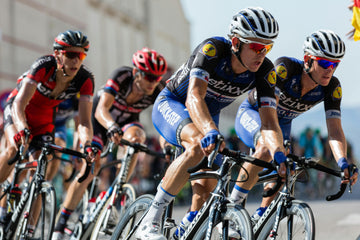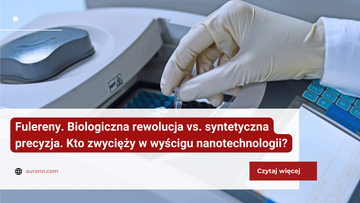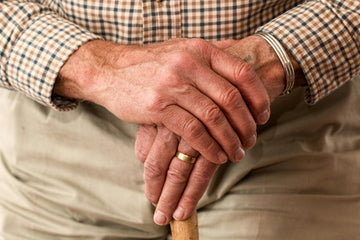dr hab. Ewa Kłodzińska, prof. WSIiZ
dr n. med. Krzysztof Gojdź
Introduction
Cardiovascular diseases (CVD) are the leading cause of death worldwide. They include coronary heart disease, atherosclerosis, hypertension, myocardial infarction, stroke, and heart failure. The pathophysiology of these conditions involves complex processes at the cellular, molecular, and vascular levels, whose common denominators are endothelial dysfunction, chronic inflammation, oxidative stress, lipid disorders, and hypertension.
In recent years, increasing attention has been paid to the role of natural bioactive substances, nutraceuticals, and carbon nanostructures, such as fullerene C60, as support for CVD prevention and therapy. The AURONN® supplement, containing C60 in the form of a highly purified powder, represents a new trend in mitochondrial cardioprotection. Pathophysiology of Cardiovascular Diseases
The main mechanisms of CVD development include chronic oxidative stress (overproduction of ROS), endothelial dysfunction (reduced NO production), activation of inflammatory cytokines (IL-6, TNF-α), mitochondrial dysfunction and ATP deficiency, lipid accumulation, and the development of atherosclerosis [1-4].
Key Strategies for Circulatory System Support
Antioxidants and Mitochondrial Bioenergetics
Cardiac muscle cells have the highest energy requirements in the body. Mitochondria play a central role in maintaining contractile function, and their damage leads to apoptosis and heart failure. Fullerene C60, as an electron carrier, neutralizes ROS, stabilizes mitochondria, improves ATP production, and protects DNA from oxidative damage [5-8].
AURONN® uses a pure powder with an admixture of biological C60, which, thanks to its specific particle surface, acts directly at the cellular level, including vascular endothelial cells and cardiomyocytes.
Reducing Inflammation and Improving Endothelial Function
Inflammation and endothelial dysfunction play a key role in the pathogenesis of many chronic diseases, including atherosclerosis, hypertension, type 2 diabetes, metabolic syndrome, and chronic kidney disease. One of the new therapeutic approaches is the use of nanomaterials with anti-inflammatory and antioxidant properties, among which fullerenes, particularly the biologically active form of C₆₀ contained in AURONN®, hold a special place.
The endothelium is the metabolically active lining of blood vessels, responsible for regulating vascular tone (NO, prostacyclin), controlling vascular permeability, inhibiting platelet aggregation and leukocyte adhesion, and modulating the inflammatory response.
Endothelial dysfunction is associated with excessive production of inflammatory cytokines (IL-6, TNF-α), increased oxidative stress, and decreased nitric oxide (NO) bioavailability.
Fullerenes (e.g., C₆₀) exhibit a number of beneficial biological effects:
C60's ability to inhibit NF-κB, COX-2, monocyte degranulation, and modulating cytokine levels makes it an effective anti-inflammatory agent, as described in publications 9-11. At the same time: L-arginine, citrulline, nitrates (from beetroot, pomegranate) increase NO production and improve blood flow [12-14]. ological activities of fullerenes.

Fig. 1. Biological activities of fullerenes.
Other cardioprotective micronutrients include coenzyme Q10, which supports the respiratory chain and increases ejection fraction [15], omega-3 fatty acids (EPA, DHA), which have anti-inflammatory properties and reduce the risk of heart attack [16-17], velenium, zinc, and magnesium, which support antioxidant enzymes and heart rhythm [18-10], and polyphenols (resveratrol, curcumin, flavonoids) – which improve vascular elasticity and inhibit platelet aggregation [21-23]. The ideal combination would be a polyphenol-based preparation with an admixture of biological fullerenes.
AURONN® – an innovative approach to cardioprotection
AURONN® contains highly purified biological fullerene C60 and numerous minerals, including silicon in powder form (without oil carriers or solvents). Unlike classic forms dissolved in olive oil:
In vitro and in vivo studies have shown:
Lifestyle and microbiome as support for the heart
Physical activity lowers blood pressure, improves perfusion, and reduces stress [29].
Stress reduction (meditation, adaptogens) lowers cortisol and prevents arrhythmia [30].
Probiotics and a healthy microbiome reduce TMAO and improve the lipid profile [31].
Possible clinical applications:
Conclusions
A modern approach to supporting the cardiovascular system should encompass both classic strategies (diet, exercise, supplements) and innovative agents with mitochondrial and antioxidant effects. In this context, fullerene C60, contained in the AURONN® supplement, demonstrates potential for reducing oxidative stress, improving vascular elasticity, and protecting mitochondria. However, this requires further clinical trials in patients with CVD.
References:
1.Libby P. (2002). Circulation, 105(9): 1135–1143.
2.Frangogiannis N.G. (2006). Circ Res, 98(6): 719–736.
3.Cai H., Harrison D.G. (2000). Circ Res, 87(10): 840–844.
4.Madamanchi N.R. et al. (2005). Arterioscler Thromb Vasc Biol, 25(1): 29–38.
5.Gharbi N. et al. (2005). Nano Lett, 5(12): 2578–2585.
6.Baati T. et al. (2012). Biomaterials, 33(19): 4936–4946.
7.Esfandiary E. et al. (2022). Front Physiol, 13: 879832.
8.Prylutska S. et al. (2021). Nanomedicine, 16(10): 803–818.
9.Moussa F. et al. (2014). Curr Top Med Chem, 14(6): 676–688.
10.Zhao L. et al. (2021). J Nanobiotechnol, 19(1): 278.
11.Tripathi S.K. et al. (2018). Nanomedicine, 14(9): 2483–2499.
12.Böger R.H. (2004). Hypertension, 44(6): 725–730.
13.Schwedhelm E. et al. (2008). Br J Clin Pharmacol, 65(1): 51–59.
14.Aviram M. et al. (2000). Clin Nutr, 19(1): 59–63.
15.Mortensen S.A. et al. (2014). JACC Heart Fail, 2(6): 641–649.
16.Mozaffarian D. et al. (2005). JAMA, 294(15): 1885–1890.
17.Calder P.C. (2017). Br J Clin Pharmacol, 83(1): 133–144.
18.Del Gobbo L.C. et al. (2013). Am J Clin Nutr, 98(1): 160–173.
19.Rayman M.P. (2012). Lancet, 379(9822): 1256–1268.
20.Prasad A.S. (2008). Mol Med, 14(5-6): 353–357.
21.Manach C. et al. (2005). Am J Clin Nutr, 81(1): 230S–242S.
22.Dolinsky V.W. et al. (2011). J Physiol, 589(Pt 18): 4435–4446.
23.Pan M.H. et al. (2011). Biofactors, 37(6): 425–430.
24.Dellinger A. et al. (2013). Curr Top Med Chem, 13(4): 1–10.
25.Chen B. et al. (2016). Mater Sci Eng C, 61: 797–805.
26.Andrievsky G.V. et al. (2002). Fullerene Sci Technol, 10(1): 23–33.
27.Oberdörster E. (2004). Environ Health Perspect, 112(10): 1058–1062.
28.Wang I.C. et al. (2005). Free Radic Biol Med, 39(3): 386–392.
29.Thompson P.D. et al. (2003). Circulation, 107(24): 3109–3116.
30.Tang W.H. et al. (2013). N Engl J Med, 368(17): 1575–1584.
31.Marques F.Z. et al. (2018). Nat Rev Cardiol, 15(12): 731–743.





